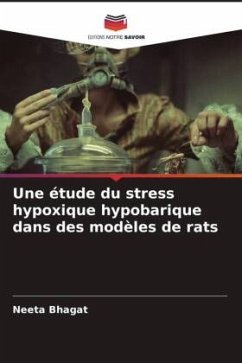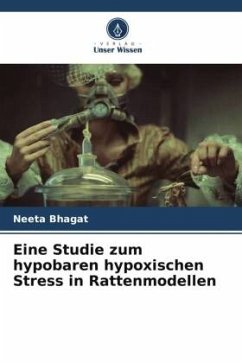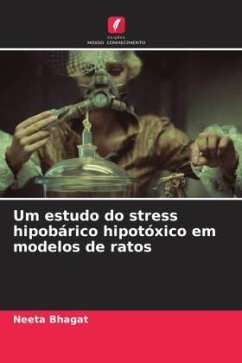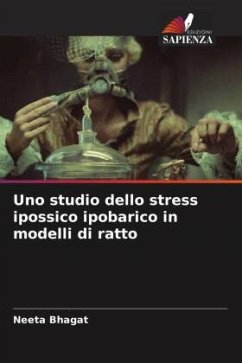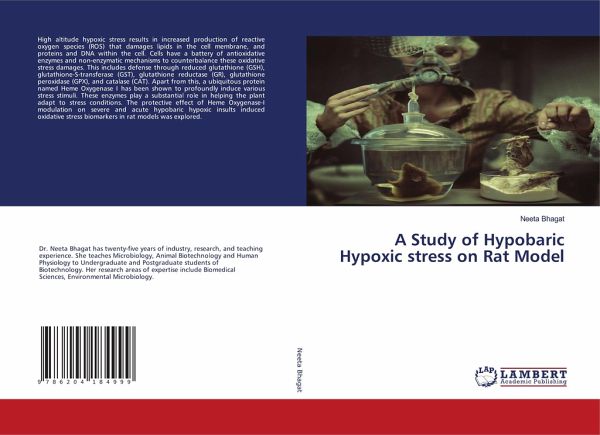
A Study of Hypobaric Hypoxic stress on Rat Model
Versandkostenfrei!
Versandfertig in 6-10 Tagen
36,99 €
inkl. MwSt.

PAYBACK Punkte
18 °P sammeln!
High altitude hypoxic stress results in increased production of reactive oxygen species (ROS) that damages lipids in the cell membrane, and proteins and DNA within the cell. Cells have a battery of antioxidative enzymes and non-enzymatic mechanisms to counterbalance these oxidative stress damages. This includes defense through reduced glutathione (GSH), glutathione-S-transferase (GST), glutathione reductase (GR), glutathione peroxidase (GPX), and catalase (CAT). Apart from this, a ubiquitous protein named Heme Oxygenase I has been shown to profoundly induce various stress stimuli. These enzyme...
High altitude hypoxic stress results in increased production of reactive oxygen species (ROS) that damages lipids in the cell membrane, and proteins and DNA within the cell. Cells have a battery of antioxidative enzymes and non-enzymatic mechanisms to counterbalance these oxidative stress damages. This includes defense through reduced glutathione (GSH), glutathione-S-transferase (GST), glutathione reductase (GR), glutathione peroxidase (GPX), and catalase (CAT). Apart from this, a ubiquitous protein named Heme Oxygenase I has been shown to profoundly induce various stress stimuli. These enzymes play a substantial role in helping the plant adapt to stress conditions. The protective effect of Heme Oxygenase-I modulation on severe and acute hypobaric hypoxic insults induced oxidative stress biomarkers in rat models was explored.



